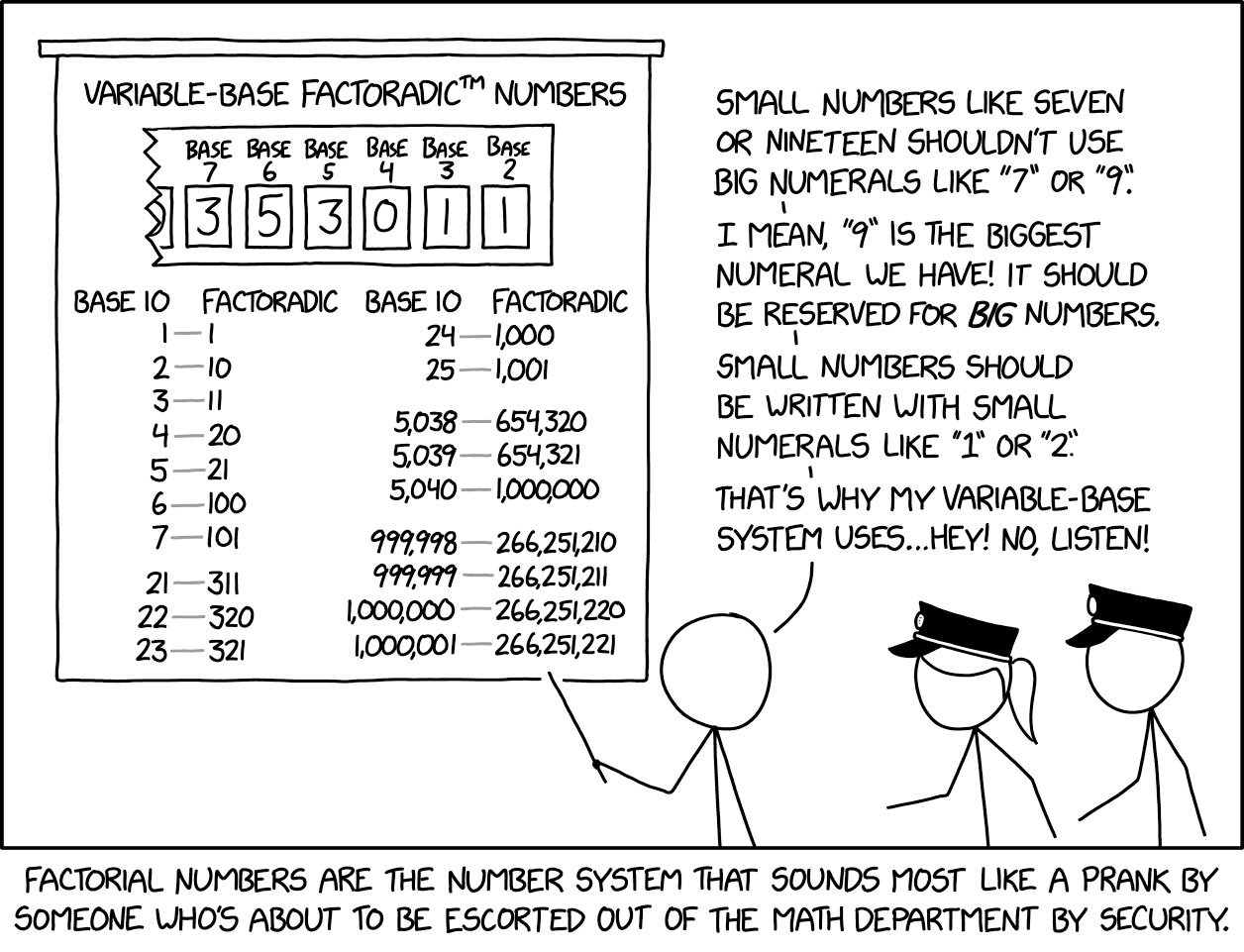this post was submitted on 30 Sep 2023
334 points (99.4% liked)
xkcd
10128 readers
108 users here now
A community for a webcomic of romance, sarcasm, math, and language.
founded 2 years ago
MODERATORS
you are viewing a single comment's thread
view the rest of the comments
view the rest of the comments

The idea is, each number is expressed as a sum of n factorials, with n being the number of digits in the number post-conversion. You start with the highest factorial that you can subtract out of the original number and work your way down.
1 becomes 1, because 1 = 1!, so the new number says "1x(1)".
2 becomes 10, because 2 = 2!. The new number says "1x(2x1) + 0x(1)".
3 becomes 11, because it's 2 + 1. The new number says "1x(2x1) + 1x(1)".
21 becomes 311: 4! is 24, so that's too big, so we use 3!, which is 6. 3x6 = 18, so our number begins as 3XX.
That leaves 3 left over, which we know is 11. The new number says "3x(3x2x1) + 1x(2x1) + 1x(1)".